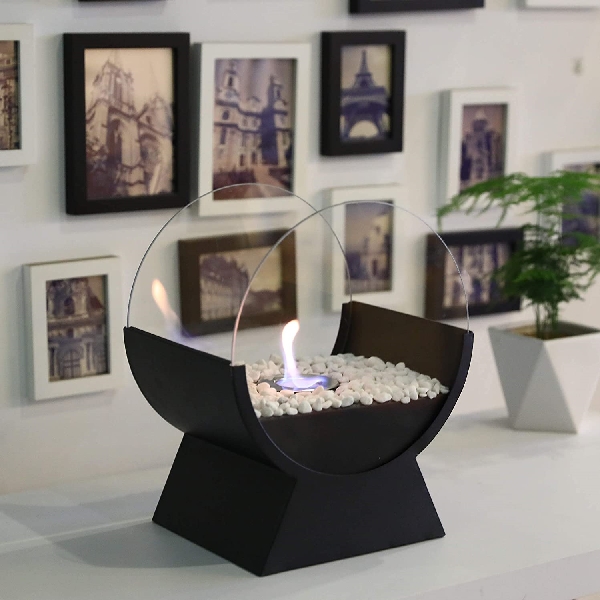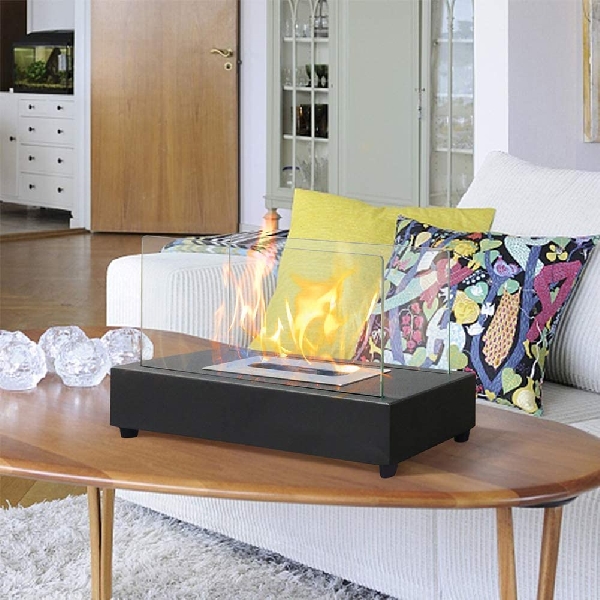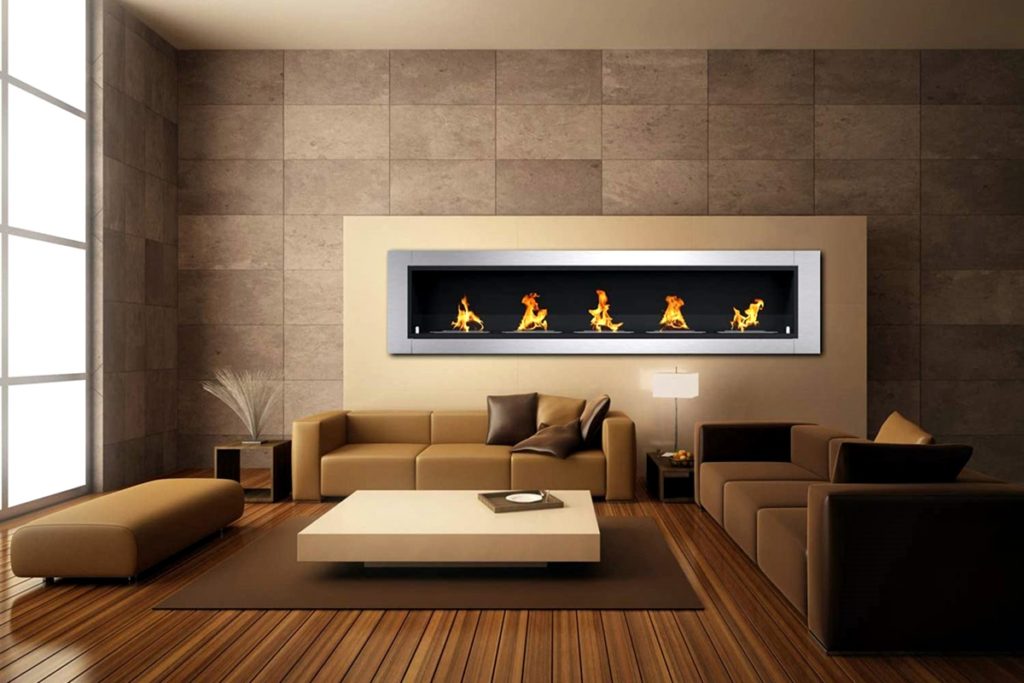Think about how warm and beautiful it is to have ethanol fireplaces in your home. Now think about the hassle that can come with a traditional fireplace. The venting, the flue, and the fact that most fireplaces are installed right into an exterior wall of your home and can’t be moved.
Ethanol Fireplace
What if you could get that same ambiance in your home without all the negative aspects tied to it? Well now you can thanks to ethanol and isopropyl alcohol gel ventless fireplaces. Though the concept is still relatively new, they have grown in popularity in just a few short years and for very good reasons.
Because they have no vent or flue, an ethanol fireplace can be located absolutely anywhere inside or outside of your home. Not only that, it can be moved from one location to another on a moment’s notice, tying into your design motif with each and every change. With no gas lines or electricity required, there is virtually no installation needed and a level of versatility that is simply unmatched.
Are ethanol fireplaces environmentally friendly?
Another downside to using a traditional fireplace is the amount of emissions that are involved. Your traditional fireplace can emit a lot of carbon monoxide which can be dangerous to your health over the long term. Not only that, there is soot, ash, and smoke to deal with regularly, making it difficult to keep your fireplace clean as well.
There are flues used in traditional fireplaces that are meant to ventilate as well as release the smoke that is created when wood is burned. But along with the smoke, some of the heat is released through these flues. This means that your traditional flue-equipped fireplaces are about as inefficient as it gets, meaning you will burn through more fuel in a far shorter time span.

Wood-burning fireplaces are becoming so unhealthy that they are being banned in some places or are being required to burn wood with less than 20% moisture content. This helps the wood to burn cleaner with fewer overall emissions that can be dangerous to the environment.
Ethanol fuel fireplaces, however, burn far cleaner and more efficient than their traditional counterparts. Since they aren’t burning any materials like wood, there is no soot or ash to have to deal with, making it far easier to clean your ethanol fireplace.
Not only that, they don’t create those dangerous carbon monoxide and smoke emissions that can be dangerous to breathe in over a long period of time. Instead, they emit streams of hot steam with very little in the way of overall emissions.
Ethanol fireplaces offer more versatile, environmentally friendly heating options
Far and wide one of the best aspects of owning an ethanol fireplace is that they come in a wide array of models. You can get them in wall mounts, tabletop, outside, and inside models. Anywhere that you want to enjoy the ambiance and heat of a fireplace, you can implement an ethanol fireplace.
Most ethanol fireplaces can amplify a home and give it a sense of modern luxury regardless of whether it is a more modern or traditional style of home. And unlike gas fireplaces, they create heat as well as a real flame. It is important to keep in mind that these ethanol fireplaces are not meant to replace your central heating but they can make a room comfy and cozy for a few hours at a time even in the coldest of conditions.
As stated previously, they are also much more efficient than their traditional counterparts. While standard wood fireplaces can lose heat thanks to the flues, ethanol fireplaces can reduce that energy loss because there are no vents or flues from which to lose that heat.
Not only that, ethanol fuel is made from renewable resources such as potatoes, corn, and rice. Isopropyl fuel is made of water, salt, isopropyl alcohol, and thickeners. In order to make sure that the consumption of the liquid is prevented for people, since the fuel is made up of alcohol, there are odorless flavors added to the fuels.

What are the differences between Ethanol and Isopropyl?
There are some important differences to know between the ethanol fireplaces and isopropyl alcohol gel. Ethanol fireplaces create something of a scattered yellow flame whereas the alcohol gel can give off a thicker yellow and orange flame that is much more vibrant.
Another difference is that the ethanol liquid has to be refilled in the burner pan itself while the isopropyl already comes in ready-to-use canisters. It takes the ethanol around 10 to 15 minutes to light up, which is a pretty short time, while the alcohol can take just 30 seconds.
It is worth noting that the heat emitted by ethanol is higher than that of isopropyl alcohol. While the latter can burn at around 5,000 BTUs per cartridge, the former can get all the way up to 8,500 BTUs. It is important to reiterate that these burners are not meant to replace your central heating, but can make any room in your home nice and warm for a few hours each day.
What is also cool is that you can add things like ceramic stones and logs to the fireplace so that it looks more rustic like a traditional wood-burning fireplace. Really, the only thing that would be missing from the equation is the scent of a wood-burning fireplace, but that is about the only thing that can’t be replicated to a much better effect.
When it comes down to it, if you want to get a warm and cozy feeling in your home without the hindrances that come with a wood-burning fireplace, ethanol or isopropyl alcohol is the way to go. These fireplaces offer a far greater level of versatility, allowing you to move it around at a moment’s notice and even bring it outside to keep your patio or outdoor area warm for gatherings.
These fireplaces are the wave of the future, allowing for a great amount of heat, versatility, and environmentally friendly emissions.

